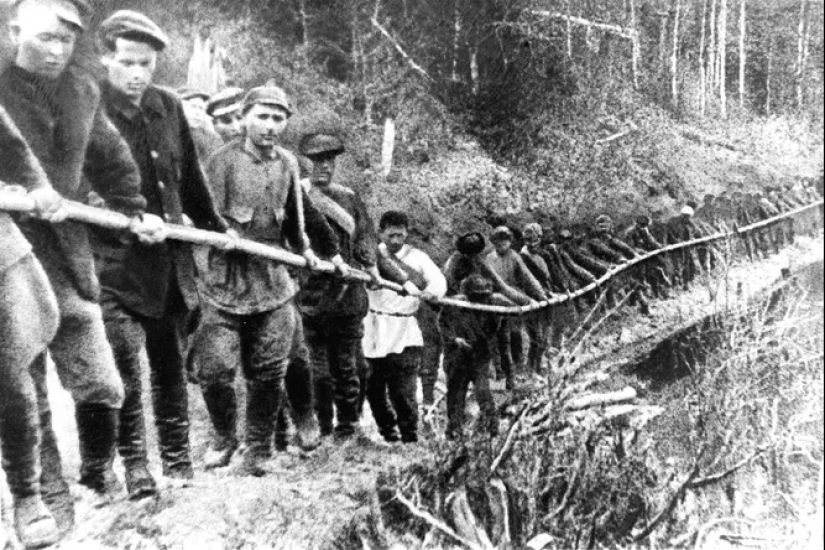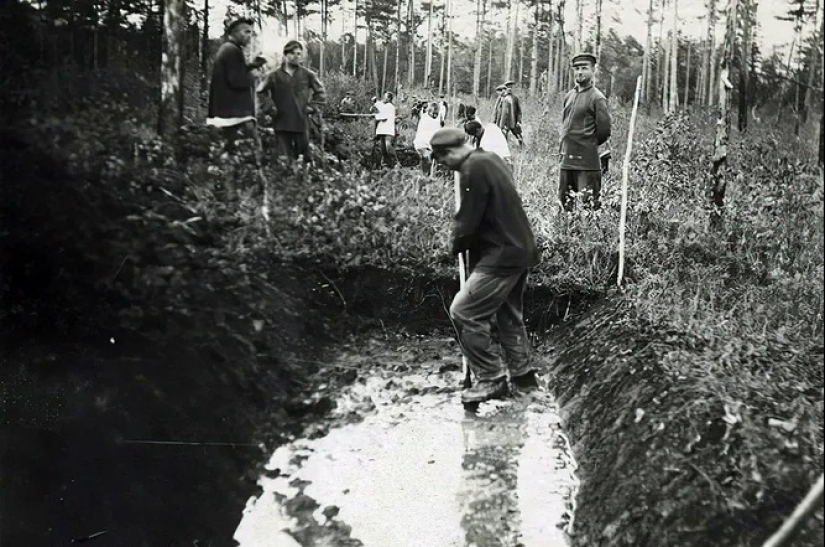“I only ate the living”: the history of the island of cannibals in the USSR
The Nazi tragedy is one of the most terrible events in Soviet history. Six thousand people were deported to Siberia and landed on an island where there was no housing, without food or tools. Very soon, hunger and disease began among the settlers, then murder and cannibalism.

In the early 1930s, the passport system, abolished after the revolution, was restored. Almost immediately, mass arrests began: patrols detained thousands of undocumented people on the streets and sent them by freight cars to Siberia. This is how the plan for its settlement, invented by the head of the GPU Genrikh Yagoda and approved by Stalin, was carried out: over the five-year period the number of inhabitants of Siberia was going to be increased by several million people.

Various people became victims of this tactic. Feofila Bylina, a resident of the Siberian village of Nazino, in whose hut a visiting courtyard was organized at that time, remembers asking one of the guys how he got here.
There were many such stories. The driver Vladimir from Moscow jumped out for cigarettes without documents. Murom resident Maria came to the capital to buy a suit for her husband and ended up in a raid. Apprentice mechanic Grigory was detained when he was traveling with a voucher for treatment to Moscow. Even two sons of the Tomsk prosecutor ended up on Nazinsky Island. They were lucky, however: their father found the boys and took them home.
But not only random passers-by were gathered in the taiga: criminals and convicts were brought along with passport regime violators, and when the battle for survival began, this played a sad role.
No one expected the arrival of the settlers: when the commandant’s office of the village of Aleksandrovskoye received a telegram announcing their arrival, the official replied that they would not be able to accept the people - there was neither housing nor food for them. The answer from Novosibirsk was short:
After a meeting in Aleksandrovsky, they decided: people would be sent to a small island located in the middle of the Ob. It made an excellent prison: on both sides the distance to the shore was at least a kilometer, so it was almost impossible to escape.
Not all passengers reached the island: the first deaths began on the barges. There was not enough space and food, repeat offenders beat up ordinary townspeople and took away their food. On the day of landing on land, about 40 bodies were pulled out and dumped in a heap. They didn’t bury them right away, and eight people came to their senses under the sun.

People arrived on the island in the clothes they were detained in during the raids: in spring clothes, some barefoot. After the first fine day the weather began to get colder, but there was no shelter: only three tents for typhoid patients and another one for distributing food. Hungry and exhausted, the settlers wandered around the island or burned fires. Some, falling asleep, fell into them and then died from burns.
But the worst thing is that no food was brought to them. It was delivered only on the fourth or fifth day; before that, people ate what they could find: rotten wood, bark and moss.
Having received rye flour after the first delivery of food, the settlers ran to the river and raised chatterbox. They didn’t give out the dishes: they did it in hats, jacket sleeves and trouser legs. There were also those who attacked the dry flour - they suffocated and died from suffocation.

On the first day, there was pandemonium near the distribution point, and the guards opened fire on the prisoners. Later the system was changed: everyone was divided into teams and a common ration was given to the so-called foreman. As a rule, they were filled with criminals who ate everything themselves.
The criminals united in gangs that hunted others on the island: they took away clothes and pulled out gold teeth. For one crown, the guards gave a box of matches or newspaper sheets for rolling cigarettes; two teeth or a more or less new coat were exchanged for a pack of shag or half a loaf of bread.
Soon cannibalism began: first occasionally, and then in alarming proportions.

A transcript of a conversation with one of the Nazi cannibals, who was caught red-handed, has been preserved.
Feofila Bylina from the village of Nazina talks about a meeting with a villager whose caviar was cut off, fried and eaten on the Island of cannibals. A 40-year-old woman, who looked like an ancient old woman, wrapped her legs in rags: they were constantly freezing. Another of Bylina’s memories:
Women on the island often became victims of cannibals. The exile’s stepdaughter Vera Panova retells her father’s words: they dug dugouts in the camp, and it was dangerous for girls and children to leave them. Women's breasts were cut off, teenagers and babies were stolen to be eaten.
Cold, hunger, disease and murder - the mortality rate on the island only grew, even the corpses did not have time to be buried. An epidemic of dysentery began. After this, the strong and healthy began to be evacuated: they were taken onto a barge, transported 100 kilometers and put ashore to explore the taiga.

The first settlers arrived on the island in May, and the evacuation was completed in August. According to the most optimistic estimates, about 2,200 prisoners out of six thousand were able to survive in four months.
The Nazi tragedy would have remained unknown if the instructor of the Narym district party committee, Vasily Velichko, had not intervened. In July 1933, he interviewed dozens of those involved in organizing the camp, and also recorded the testimony of village residents.
Velichko sent his report to three addresses, including Moscow - to Stalin. The investigation that began confirmed most of the facts from the letter, after which all materials were classified.
Residents of Nazin are trying to preserve the memory of the tragedy. In the village, a church dedicated to the innocent victims of the Gulag was built with donations; every year in June flowers are brought to the cross on the island. This is not always possible - the island is often flooded with water, and perhaps soon it will completely disappear. But in the history of the country, Death Island will remain forever - as one of its most terrible pages.
Recent articles

Victor Lustig is considered one of the most skillful and famous scammers in the world. He was arrested about 50 times and released ...

A small apartment is not a sentence! On the contrary, this is an occasion to turn on imagination and come up with ways to stylishly ...

Each of us has heard at least once that "breakfast is the most important meal of the day." Spreading this truth is the work of ...